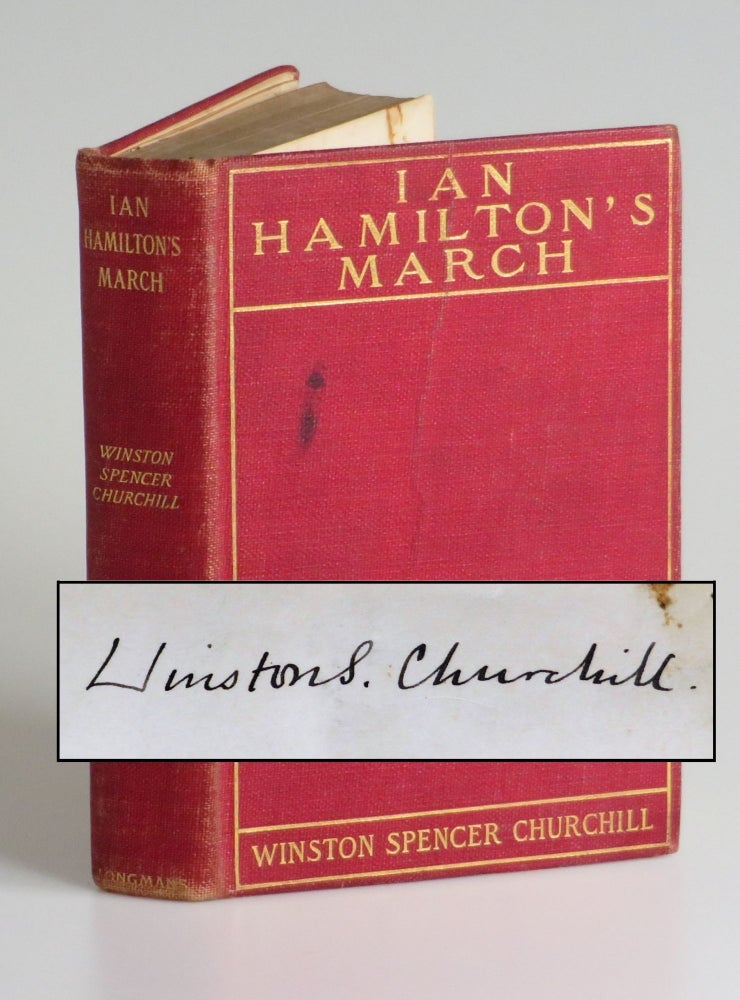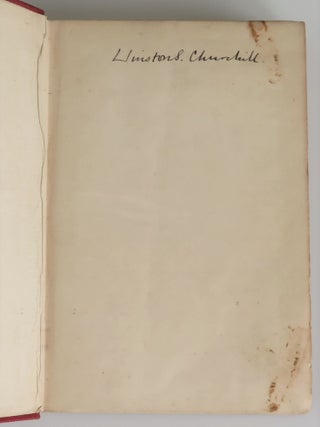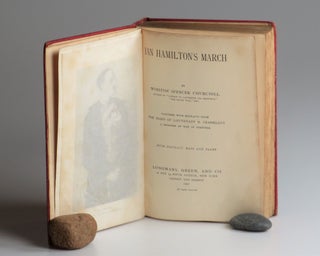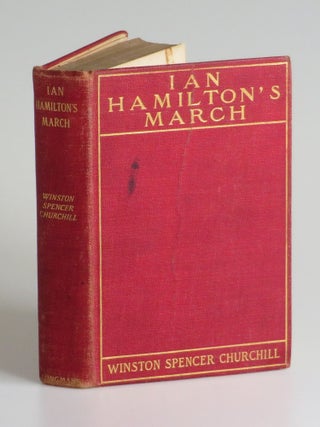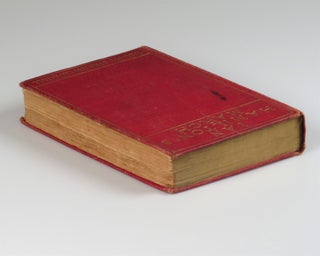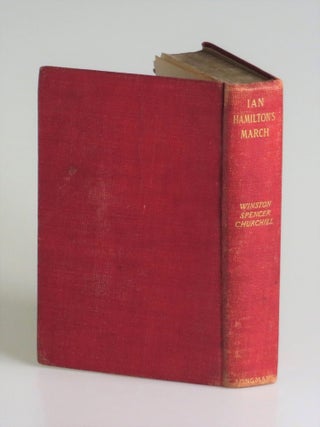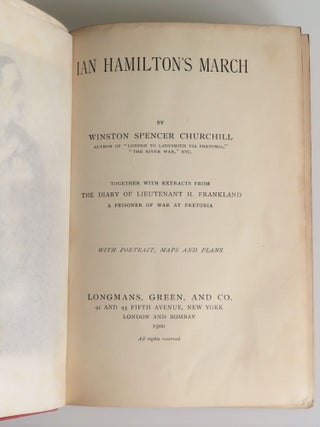Ian Hamilton's March, the U.S. first edition, only printing, signed by Churchill during his first lecture tour of the U.S. and Canada
New York: Longmans, Green, and Co., 1900. First U.S. edition, only printing. Hardcover. This is a signed U.S. first edition, only printing of Winston Churchill's fifth book – his final book chronicling his adventures as an itinerant soldier and war correspondent. The young Churchill almost certainly signed this copy in late 1900 or early 1901 during his first North American Lecture tour before he returned to England to take his first seat in Parliament.
Condition of this signed copy is good plus – sound, original, and complete despite some typical wear and defects. The red cloth binding remains square and tight with bright gilt and no appreciable color shift between the covers and spine. Overall scuffing is most pronounced to the extremities, and there is a small, dark stain on the front cover. A single, faint, jagged vertical line – one on both the front and rear covers – seem to indicate that the boards were once a bit creased, but the boards nonetheless remain rigid and straight, with no fragility or warping. The contents are respectably clean and complete. The frontispiece, tissue guard, and maps are all intact, including the folding map following the text, though the map was previously mis-folded, as is typical, resulting in some fraying to the edges. The contents show moderate age-toning and the frontispiece was previously creased. Spotting is trivial, primarily confined to the first and final leaves and the fore edges. The gilt top edge is a bit dulled and scuffed, but still distinctly gilt.
The outer corners of the front free endpaper recto and final free endpaper verso show tape stains. This copy came to us from a private collection, where it long resided. The tape stains result from a well-intentioned but ill-conceived effort to protect the book. The book was long ago fitted with a homemade glassine wrapper, the inner flaps of which were secured by tape – which of course was not archival and stained the pages against which it lay. The glassine was on the book long enough to have toned and brittled with age and the tape – as evidenced by the stains – to have toned, stiffened, and lost adhesion.
We find no previous ownership marks – only the author’s signature. Churchill’s signature, “Winston S. Churchill” in black ink on the upper front free endpaper recto, is consonant in location, style, and characteristics with other Churchill signatures in books signed during his first North American Lecture tour. The ink remains distinct, with no significant age-spreading or toning.
In October 1899, the second Boer War erupted in South Africa between descendants of Dutch settlers and the British. As an adventure-seeking young cavalry officer and war correspondent, Churchill swiftly found himself in South Africa with the 21st Lancers and an assignment as press correspondent to the Morning Post. Soon thereafter, on 15 November 1899, Churchill was captured during a Boer ambush of an armored train. His daring escape less than a month later made him a celebrity and helped launch his political career.
Churchill returned from South Africa in July 1900 and spent the summer campaigning hard in Oldham, winning his first seat in Parliament on 1 October 1900. His first North American lecture tour swiftly followed. Churchill's lecture tour of the United States and Canada was intended to improve his finances at a time when MPs received no salary. Churchill arrived in New York on board the Lucania on December 8, 1900.
Ian Hamilton’s March, Churchill's second and final Boer War book, published in the U.S. on 26 November 1900, was perfectly suited to his lectures. This U.S. first edition had the further advantage of being available for sale in the United States concurrent with Churchill’s tour. Nonetheless, this is only the second signed copy of the U.S. first edition of Ian Hamilton’s March we have encountered, perhaps owing to the small print run.
PLEASE NOTE THAT A CONSIDERABLY MORE DETAILED DESCRIPTION OF THIS ITEM IS AVAILABLE UPON REQUEST.
Reference: Cohen A8.2, Woods/ICS A5(ca), Langworth p.61. Item #006662
Price: $15,000.00

